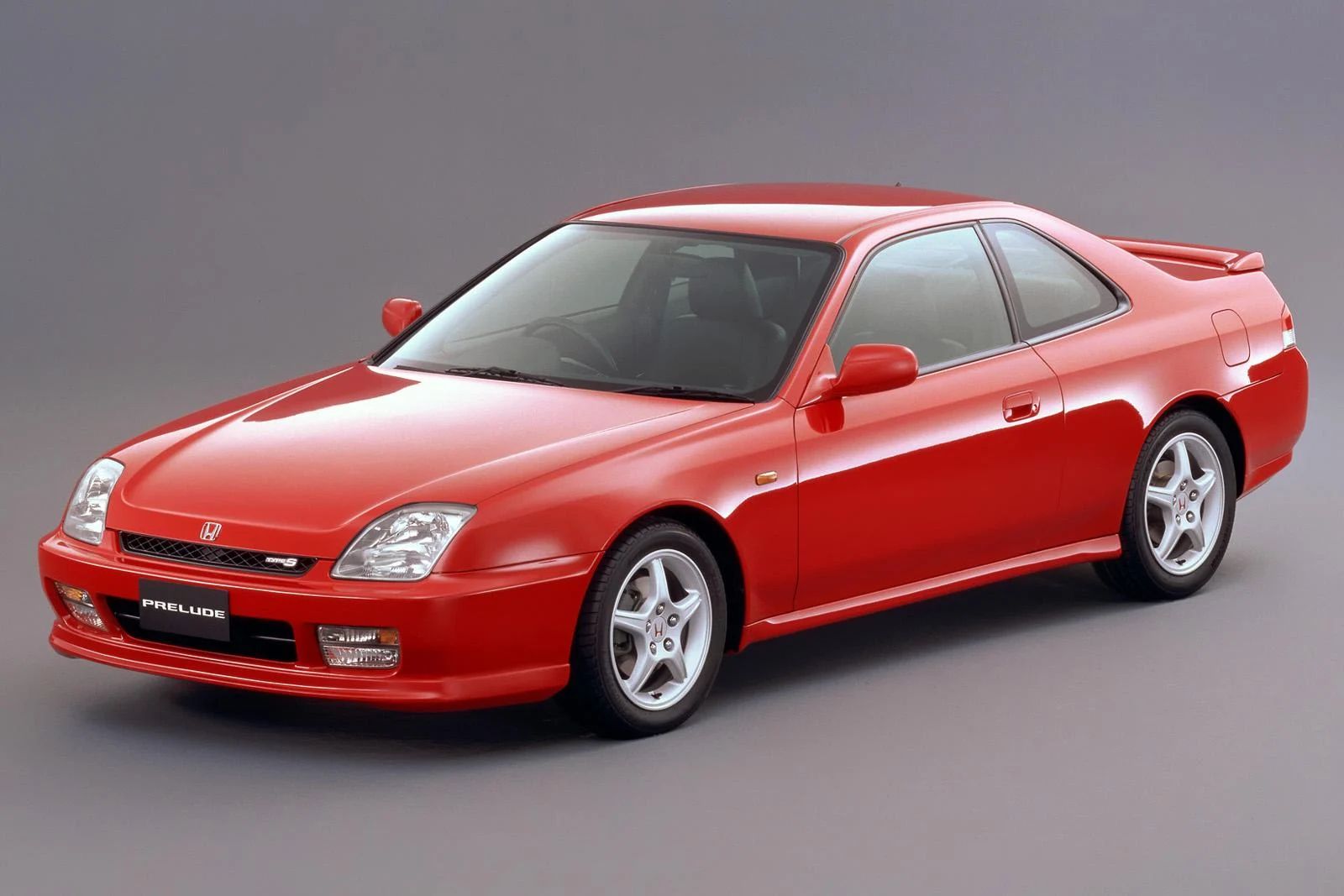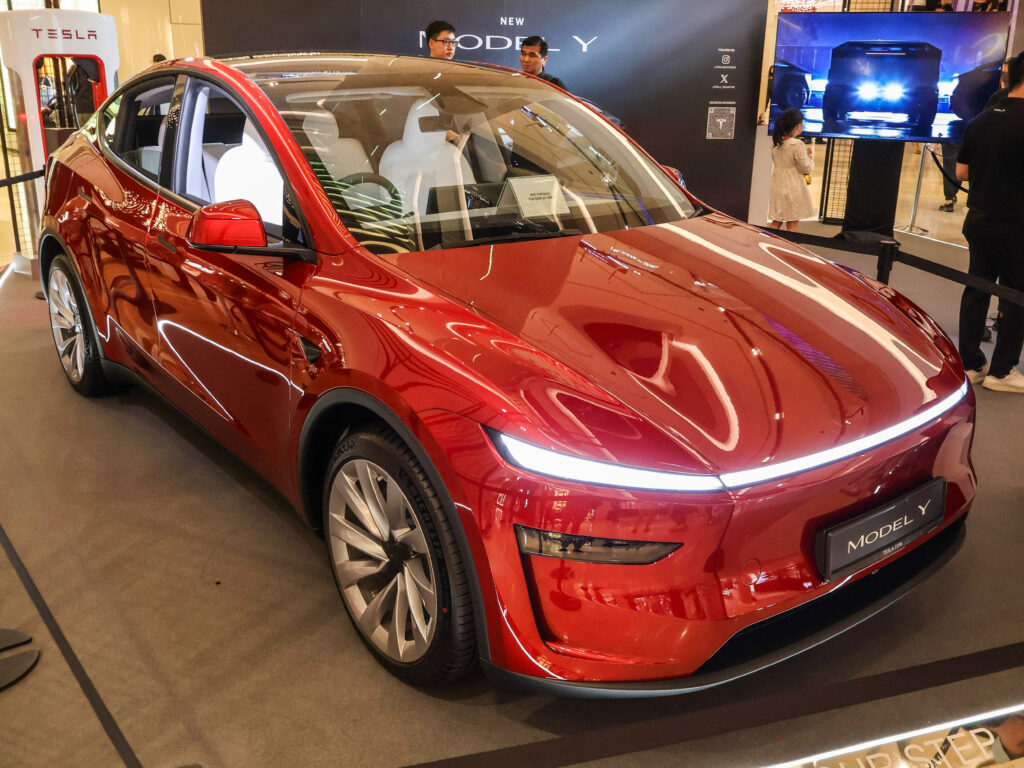
The automotive landscape is undergoing a monumental shift, and nowhere is this more evident than in the burgeoning market for electric-powered full-size pickup trucks. For decades, the pickup truck segment has been a bedrock of the American automotive industry, synonymous with rugged capability and gasoline-fueled power. Now, a new generation of electric titans is emerging, promising to redefine what a truck can be. These vehicles are not just electrified versions of their predecessors; they represent a bold step toward a future where power, efficiency, and environmental consciousness converge.
At the forefront of this electrifying transformation are two highly anticipated contenders: the 2025 Ford F-150 Lightning and the 2025 Tesla Cybertruck. While both are spearheading the charge into an electric future, they do so with fundamentally different philosophies. The F-150 Lightning leverages Ford’s decades of truck-building expertise, offering an electrified take on America’s best-selling vehicle that feels both familiar and revolutionary. In stark contrast, the Cybertruck, with its out-of-this-world appearance, embodies Tesla’s disruptive spirit, daring to challenge every convention of truck design and engineering.
This in-depth article aims to dissect these formidable machines, delving into their performance, capability, range, technology, and overall user experience. By putting these two electric pickups head-to-head, and occasionally bringing in the Rivian R1T for context as a key competitor, we seek to provide a comprehensive review that goes beyond surface-level features. Our goal is to equip prospective buyers with the insights needed to navigate this exciting, rapidly evolving segment and determine which electric truck truly aligns with their needs and preferences.
1. **Design Philosophy: Classic Toughness vs. Sci-Fi Statement**The most immediate and striking difference between the Ford F-150 Lightning and the Tesla Cybertruck lies in their fundamental design philosophies. Ford, with its rich legacy in truck manufacturing, has taken an evolutionary approach with the F-150 Lightning. It consciously retains the familiar, rugged silhouette of America’s best-selling truck, an intentional move that blends innovation with a proven heritage. This design choice means it looks like a truck, works like a truck, and, crucially, fits into your lifestyle without a steep learning curve, appealing to traditional truck buyers who value familiarity and established functionality.
In stark contrast, the Tesla Cybertruck is nothing short of a radical departure from convention, designed to make an unequivocal statement. With its heavily creased stainless steel exoskeleton and angular, armored-vehicle aesthetic, it truly looks like it came from another galaxy. This audacious design is deeply polarizing; some will undoubtedly appreciate its bold, futuristic look and the attention it garners, while others may find it too unconventional, preferring the more traditional styling and inherent versatility offered by its competitors. The Cybertruck’s design is “like no other vehicle sold today, and that alone has generated a lot of interest.”
These divergent designs are a clear reflection of each brand’s overarching philosophy. Ford opts for an approach that respects and builds upon existing trust and comfort, easing the transition for gas-powered truck owners into the electric era. Tesla, on the other hand, embraces disruption, pushing the boundaries of what a vehicle can look like and how it can be constructed, prioritizing futuristic aesthetics and technological advancement above all else. This dichotomy means that for many, the choice between these two trucks will begin and end with their visual appeal and what that statement conveys.
Car Model Information: 2021 Volvo XC60 T6 Momentum
Name: Ford F-150 Lightning
Manufacturer: Ford Motor Company
Related: Ford F-Series (fourteenth generation)
Assembly: Dearborn, Michigan
ModelYears: 2022–present
Production: April 2022 – present
Layout: Dual-motor, four-wheel-drive
Platform: Ford T platform#T3
Class: Pickup truck
Sp: us
Battery: lithium-ion
Motor: permanent magnet motor
ElectricRange: Unbulleted list
Abbr: on (extended battery)
Powerout: Unbulleted list
Charging: Unbulleted list
Designer: Unbulleted list
Wheelbase: cvt
Length: cvt
Width: cvt
Height: cvt
Weight: cvt
Categories: All Wikipedia articles in need of updating, All Wikipedia articles written in American English, All articles containing potentially dated statements, All articles with unsourced statements, Articles containing potentially dated statements from June 2022
Summary: The Ford F-150 Lightning is a battery electric full-size light duty truck unveiled by the Ford Motor Company in May 2021 as part of the fourteenth generation Ford F-Series. Four models have been announced, and all models initially will be dual-motor, four-wheel-drive, with EPA range estimates of 240–320 mi (390–510 km). A commercial-grade version of the all-wheel drive (AWD) truck is sold in the United States, with higher-power/trim/range models also sold. The F-150 Lightning began production on April 26, 2022.
Get more information about: Ford F-150 Lightning
Buying a high-performing used car >>>
Brand: Ford Model: F-150 Lightning
Price: $21,646 Mileage: 95,153 mi.
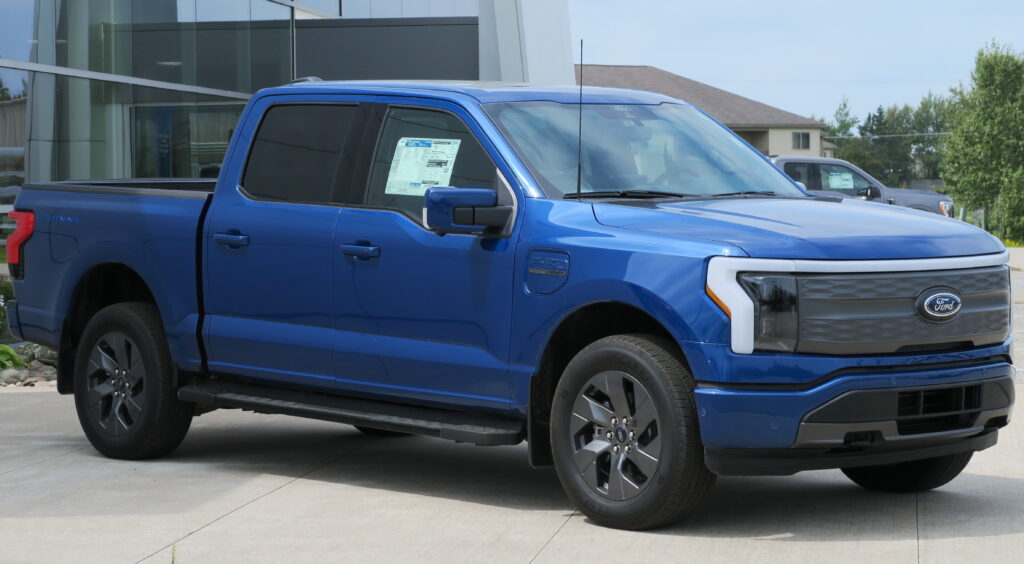
2. **Powertrain, Horsepower, and Torque**Beneath their distinctive exteriors, both the Ford F-150 Lightning and the Tesla Cybertruck house formidable electric powertrains engineered for serious capability. The 2025 Ford F-150 Lightning comes standard with a dual-motor electric powertrain and all-wheel drive (AWD), delivering a robust 452 horsepower and an impressive 775 lb-ft of torque. For those seeking even greater output, an extended-range battery option is available, nudging the horsepower up to 580 hp while maintaining the same substantial 775 lb-ft of torque. Ford’s long and proven record for building hard-working trucks bodes well for the F-150 Lightning’s toughness and longevity, a testament to its engineering.
The 2025 Tesla Cybertruck, similarly, features a dual electric-motor powertrain and standard all-wheel drive. The All-Wheel Drive model offers 600 horsepower and 525 lb-ft of torque, providing a potent combination of power and control. For enthusiasts craving maximum performance, the top-tier Cyberbeast variant pushes the boundaries further with an astounding 845-horsepower electric powertrain. These figures highlight Tesla’s focus on raw, immediate power delivery, often characteristic of its electric vehicles.
Both trucks underscore the significant advantages of electric powertrains, delivering instant torque and seamless power distribution. While the Lightning offers higher torque in its primary configurations, beneficial for hauling and off-the-line grunt, the Cybertruck’s higher horsepower figures, especially in its Cyberbeast trim, promise exhilarating acceleration. The availability of AWD as standard in both, along with optional larger batteries for extended range, indicates a shared understanding of core consumer expectations in the electric pickup segment.
Car Model Information: 2021 Volvo XC60 T6 Momentum
Name: Ford F-150 Lightning
Manufacturer: Ford Motor Company
Related: Ford F-Series (fourteenth generation)
Assembly: Dearborn, Michigan
ModelYears: 2022–present
Production: April 2022 – present
Layout: Dual-motor, four-wheel-drive
Platform: Ford T platform#T3
Class: Pickup truck
Sp: us
Battery: lithium-ion
Motor: permanent magnet motor
ElectricRange: Unbulleted list
Abbr: on (extended battery)
Powerout: Unbulleted list
Charging: Unbulleted list
Designer: Unbulleted list
Wheelbase: cvt
Length: cvt
Width: cvt
Height: cvt
Weight: cvt
Categories: All Wikipedia articles in need of updating, All Wikipedia articles written in American English, All articles containing potentially dated statements, All articles with unsourced statements, Articles containing potentially dated statements from June 2022
Summary: The Ford F-150 Lightning is a battery electric full-size light duty truck unveiled by the Ford Motor Company in May 2021 as part of the fourteenth generation Ford F-Series. Four models have been announced, and all models initially will be dual-motor, four-wheel-drive, with EPA range estimates of 240–320 mi (390–510 km). A commercial-grade version of the all-wheel drive (AWD) truck is sold in the United States, with higher-power/trim/range models also sold. The F-150 Lightning began production on April 26, 2022.
Get more information about: Ford F-150 Lightning
Buying a high-performing used car >>>
Brand: Ford Model: F-150 Lightning
Price: $21,646 Mileage: 95,153 mi.
Read more about: Hidden Costs: The 13 Critical Ways You Could Be Voiding Your Car’s Warranty and How to Prevent It

3. **Acceleration Performance**In the realm of acceleration, both the Ford F-150 Lightning and the Tesla Cybertruck demonstrate the impressive quickness inherent to electric powertrains, though with some notable distinctions. Tesla has historically prioritized rapid acceleration, and the Cybertruck is no exception. The base All-Wheel Drive Cybertruck model is capable of sprinting from a standstill to 60 mph in about 4.1 seconds. Opt for the even more powerful Cyberbeast variant with its 845-hp electric powertrain, and this figure drops to below three seconds, putting it in supercar territory for a pickup truck.
The Ford F-150 Lightning, while designed with a more traditional truck-like sensibility, also delivers brisk performance. According to MotorTrend’s testing, the F-150 Lightning achieved the 0-60 mph mark in 4.1 seconds, placing it directly alongside the base Cybertruck. Edmunds’ car experts also found the acceleration and range to be “very similar for the two trucks,” with the All-Wheel Drive Cybertruck and upgraded Lightning accelerating from zero to 60 mph in “4 seconds flat.” This indicates that for most daily driving scenarios, both trucks offer exhilarating straight-line performance.
For comparative context, MotorTrend’s testing included the Rivian R1T, which managed a 0-60 mph time of 3.3 seconds, demonstrating slightly quicker acceleration than either the standard Cybertruck or the F-150 Lightning. Ultimately, while the Cybertruck’s Cyberbeast variant provides an almost absurd level of acceleration for a truck, both the F-150 Lightning and the standard Cybertruck deliver more than enough punch for merging onto highways or spirited driving, proving that electric trucks are anything but sluggish.
Car Model Information: 2024 Tesla Cybertruck All-Wheel Drive
Name: Tesla Cybertruck
Caption: 2024 Tesla Cybertruck, Foundation Series
Manufacturer: Tesla, Inc.
Production: November 2023 – present
ModelYears: 2024–present
Assembly: Austin, Texas
Designer: unbulleted list
Class: Pickup truck
BodyStyle: crew cab
Layout: unbulleted list
Transmission: Single-speed fixed (15:1 ratio)
ElectricRange: cvt
Wheelbase: cvt
Length: cvt
Width: cvt
Height: cvt
Weight: Unbulleted indent list
Sp: us
Charging: unbulleted list
Battery: val
Motor: unbulleted indent list
Categories: 2020s cars, All-wheel-drive vehicles, All Wikipedia articles written in American English, All articles containing potentially dated statements, All articles with unsourced statements
Summary: The Tesla Cybertruck is a battery-electric full-size pickup truck manufactured by Tesla, Inc. since 2023. It was first unveiled as a prototype in November 2019, featuring a distinctive angular design composed of flat, unpainted stainless steel body panels, drawing comparisons to low-polygon computer models.
Originally scheduled for production in late 2021, the vehicle faced multiple delays before entering limited production at Gigafactory Texas in November 2023, with initial customer deliveries occurring later that month. As of 2025, three variants are available: a tri-motor all-wheel drive (AWD) model marketed as the “Cyberbeast”, a dual-motor AWD model, and a single-motor rear-wheel drive (RWD) “Long Range” model. EPA range estimates vary by configuration, from 320 to 350 miles (515 to 565 km).
As of 2025, the Cybertruck is sold in the United States, Mexico, Canada and South Korea. The Cybertruck has been criticized for its production quality and safety concerns while its sales have been described as disappointing.
Get more information about: Tesla Cybertruck
Buying a high-performing used car >>>
Brand: Tesla Model: Cybertruck
Price: $75,395 Mileage: 2,133 mi.
Read more about: 10 Critical Car Maintenance Tasks You Can’t Afford to Ignore
4. **Braking Performance and Consistency**Braking performance is a critical aspect of vehicle safety and driver confidence, especially for heavy pickup trucks. In tests, the Ford F-150 Lightning and the Rivian R1T both recorded impressive 123-foot stopping distances from 60 mph. However, the Ford’s steel suspension “dove considerably” during braking, a characteristic that can impact driver feel and control. More concerning, its “pads started smoking after one stop, and distances stretched by 6–7 feet in the ensuing stops,” suggesting potential issues with heat management under repeated heavy braking.
The Tesla Cybertruck, in similar tests, recorded slightly longer stopping distances at 126 feet from 60 mph. Test drivers noted that the Cybertruck’s pedal “felt soft and traveled farther than the others’,” which might require a period of adjustment for drivers accustomed to firmer brake pedals. Despite this, “body control was excellent, and the stops were consistent,” indicating that while the feel might be different, the truck maintains predictable performance without significant fade after initial stops.
Bringing the Rivian R1T into the comparison, it was noted to have “braked best, with a short stroke, a firm pedal, and no dive,” suggesting superior brake feel and overall performance. The differences observed highlight varying engineering approaches to handling the substantial weight and power of these electric trucks. While the Cybertruck offers consistent braking, the Lightning’s performance could be hampered by suspension dive and potential fade under strenuous conditions, making the Rivian the standout in this particular metric.
Car Model Information: 2021 Volvo XC60 T6 Momentum
Name: Ford F-150 Lightning
Manufacturer: Ford Motor Company
Related: Ford F-Series (fourteenth generation)
Assembly: Dearborn, Michigan
ModelYears: 2022–present
Production: April 2022 – present
Layout: Dual-motor, four-wheel-drive
Platform: Ford T platform#T3
Class: Pickup truck
Sp: us
Battery: lithium-ion
Motor: permanent magnet motor
ElectricRange: Unbulleted list
Abbr: on (extended battery)
Powerout: Unbulleted list
Charging: Unbulleted list
Designer: Unbulleted list
Wheelbase: cvt
Length: cvt
Width: cvt
Height: cvt
Weight: cvt
Categories: All Wikipedia articles in need of updating, All Wikipedia articles written in American English, All articles containing potentially dated statements, All articles with unsourced statements, Articles containing potentially dated statements from June 2022
Summary: The Ford F-150 Lightning is a battery electric full-size light duty truck unveiled by the Ford Motor Company in May 2021 as part of the fourteenth generation Ford F-Series. Four models have been announced, and all models initially will be dual-motor, four-wheel-drive, with EPA range estimates of 240–320 mi (390–510 km). A commercial-grade version of the all-wheel drive (AWD) truck is sold in the United States, with higher-power/trim/range models also sold. The F-150 Lightning began production on April 26, 2022.
Get more information about: Ford F-150 Lightning
Buying a high-performing used car >>>
Brand: Ford Model: F-150 Lightning
Price: $21,646 Mileage: 95,153 mi.
Read more about: Beyond Limits: The Human Art of Drifting and the Autonomous Tech Redefining Sideways Driving
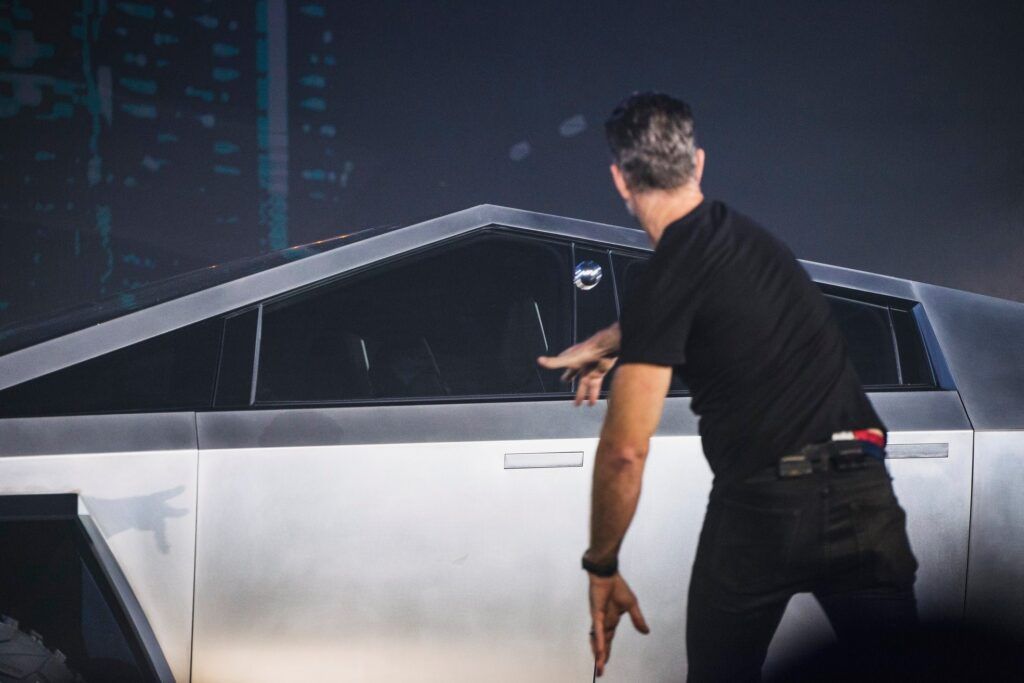
5. **Real-World Driving Range and Charging Infrastructure**Driving range and access to reliable charging infrastructure are paramount concerns for any electric vehicle owner, especially for a pickup truck designed for work and adventure. The Ford F-150 Lightning offers two battery options: a Standard Range battery delivering up to 240 miles of range, and an Extended Range option that bumps the EPA-estimated range to 320 miles. In real-world testing, the Lightning achieved approximately 222 miles in a 70-mph MT Road-Trip Range test, indicating that actual performance can vary with driving conditions. Ford owners benefit from the BlueOval™ Charge Network, which is touted as the largest public charging network in North America, and now the Lightning can also utilize Tesla’s Supercharger stations with an adapter.
The Tesla Cybertruck boasts impressive projected figures, with Tesla estimating its driving range varies from a low of 320 miles to a high of 445 miles when equipped with a larger optional battery. Edmunds notes that the All-Wheel Drive model has an estimated range of up to 340 miles, and in the Edmunds EV Range Test, both the AWD Cybertruck and upgraded Lightning managed to go more than 330 miles. However, MotorTrend’s real-world test for the Cybertruck showed 224 miles, very similar to the Lightning, reminding us that “real-world range will ultimately depend on usage and conditions.” A considerable bonus for any Tesla vehicle has traditionally been access to the automaker’s extensive nationwide network of Supercharger stations, which significantly reduces “stress and guesswork” during long-distance travel.
Historically, Tesla’s Supercharger network provided a significant advantage, as the Cybertruck can charge quickly at high-powered fast-charging stations, returning “the most range of the trio after 15 minutes of charging.” However, the charging landscape is rapidly evolving. Rivians and Fords can now “plug into most Superchargers using an adapter,” effectively broadening their charging options. Crucially, the Cybertruck is not compatible with CCS stations as of this writing, which means the R1T and Lightning “actually offer more places to plug in” when considering the entire charging ecosystem, shifting the competitive edge in accessibility.
Car Model Information: 2021 Volvo XC60 T6 Momentum
Name: Ford F-150 Lightning
Manufacturer: Ford Motor Company
Related: Ford F-Series (fourteenth generation)
Assembly: Dearborn, Michigan
ModelYears: 2022–present
Production: April 2022 – present
Layout: Dual-motor, four-wheel-drive
Platform: Ford T platform#T3
Class: Pickup truck
Sp: us
Battery: lithium-ion
Motor: permanent magnet motor
ElectricRange: Unbulleted list
Abbr: on (extended battery)
Powerout: Unbulleted list
Charging: Unbulleted list
Designer: Unbulleted list
Wheelbase: cvt
Length: cvt
Width: cvt
Height: cvt
Weight: cvt
Categories: All Wikipedia articles in need of updating, All Wikipedia articles written in American English, All articles containing potentially dated statements, All articles with unsourced statements, Articles containing potentially dated statements from June 2022
Summary: The Ford F-150 Lightning is a battery electric full-size light duty truck unveiled by the Ford Motor Company in May 2021 as part of the fourteenth generation Ford F-Series. Four models have been announced, and all models initially will be dual-motor, four-wheel-drive, with EPA range estimates of 240–320 mi (390–510 km). A commercial-grade version of the all-wheel drive (AWD) truck is sold in the United States, with higher-power/trim/range models also sold. The F-150 Lightning began production on April 26, 2022.
Get more information about: Ford F-150 Lightning
Buying a high-performing used car >>>
Brand: Ford Model: F-150 Lightning
Price: $21,646 Mileage: 95,153 mi.
Read more about: The 11 Worst Depreciating Sedans: What Resale Charts Reveal for Savvy Investors
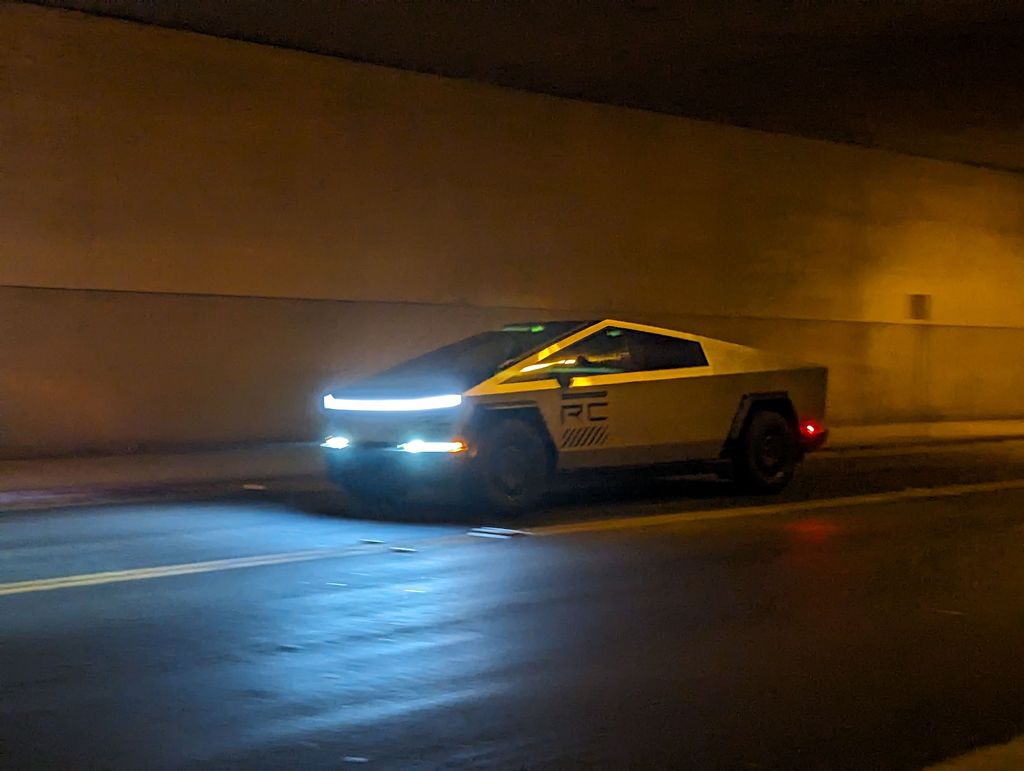
6. **Towing Capacity and Advanced Towing Features**For pickup trucks, towing capability is a core competency, and both the electric F-150 Lightning and Cybertruck offer serious muscle, though with distinct strengths and weaknesses. On paper, both Cybertruck models boast an impressive maximum towing capacity of 11,000 pounds. This figure nominally bests the Ford F-150 Lightning, which maxes out at 10,000 pounds when properly equipped, with the Platinum trim rated for 8,500 pounds. While the Cybertruck holds a slight advantage in maximum pounds, it’s crucial to remember that “heavy towing results in a far more limited EV range.”
In real-world towing scenarios, the experience reveals more than just numbers. When towing a featherweight 3,170-pound Bowlus Volterra camping trailer, our testers noted that these lightweight trailers “didn’t tax any of our trucks.” However, a surprising observation was how much the Ford and Tesla “kicked the Ford and Tesla around on a lumpy stretch of pavement along our route.” By contrast, the Rivian, in the same test, “felt imperturbable.” This suggests differences in suspension tuning and stability under load.
Where the Cybertruck particularly shone was in the “ease of reversing the trailer and placing it right where we wanted,” a benefit attributed to its rear-wheel steering and variable-ratio by-wire steering. However, its “kooky triangle mirrors are antithetical to towing,” and the “hitch location was inset too deeply to accommodate our variable-height ball adapter,” creating practical impediments. The Lightning, on the other hand, distinguishes itself with several thoughtful towing and hauling features that the Cybertruck currently lacks, such as “Onboard Scales,” which estimates payload weight, and “Smart Hitch,” which estimates the tongue weight of the trailer. Ford also “deserves big props for automating trailer hitch alignment and trailer reversing,” making the towing process more user-friendly and less stressful, despite its slightly lower maximum capacity.
Car Model Information: 2024 Tesla Cybertruck All-Wheel Drive
Name: Tesla Cybertruck
Caption: 2024 Tesla Cybertruck, Foundation Series
Manufacturer: Tesla, Inc.
Production: November 2023 – present
ModelYears: 2024–present
Assembly: Austin, Texas
Designer: unbulleted list
Class: Pickup truck
BodyStyle: crew cab
Layout: unbulleted list
Transmission: Single-speed fixed (15:1 ratio)
ElectricRange: cvt
Wheelbase: cvt
Length: cvt
Width: cvt
Height: cvt
Weight: Unbulleted indent list
Sp: us
Charging: unbulleted list
Battery: val
Motor: unbulleted indent list
Categories: 2020s cars, All-wheel-drive vehicles, All Wikipedia articles written in American English, All articles containing potentially dated statements, All articles with unsourced statements
Summary: The Tesla Cybertruck is a battery-electric full-size pickup truck manufactured by Tesla, Inc. since 2023. It was first unveiled as a prototype in November 2019, featuring a distinctive angular design composed of flat, unpainted stainless steel body panels, drawing comparisons to low-polygon computer models.
Originally scheduled for production in late 2021, the vehicle faced multiple delays before entering limited production at Gigafactory Texas in November 2023, with initial customer deliveries occurring later that month. As of 2025, three variants are available: a tri-motor all-wheel drive (AWD) model marketed as the “Cyberbeast”, a dual-motor AWD model, and a single-motor rear-wheel drive (RWD) “Long Range” model. EPA range estimates vary by configuration, from 320 to 350 miles (515 to 565 km).
As of 2025, the Cybertruck is sold in the United States, Mexico, Canada and South Korea. The Cybertruck has been criticized for its production quality and safety concerns while its sales have been described as disappointing.
Get more information about: Tesla Cybertruck
Buying a high-performing used car >>>
Brand: Tesla Model: Cybertruck
Price: $75,395 Mileage: 2,133 mi.
Read more about: From Promising Prospects to Puzzling Flops: The Pickup Trucks That Just Can’t Seem to Find a Home
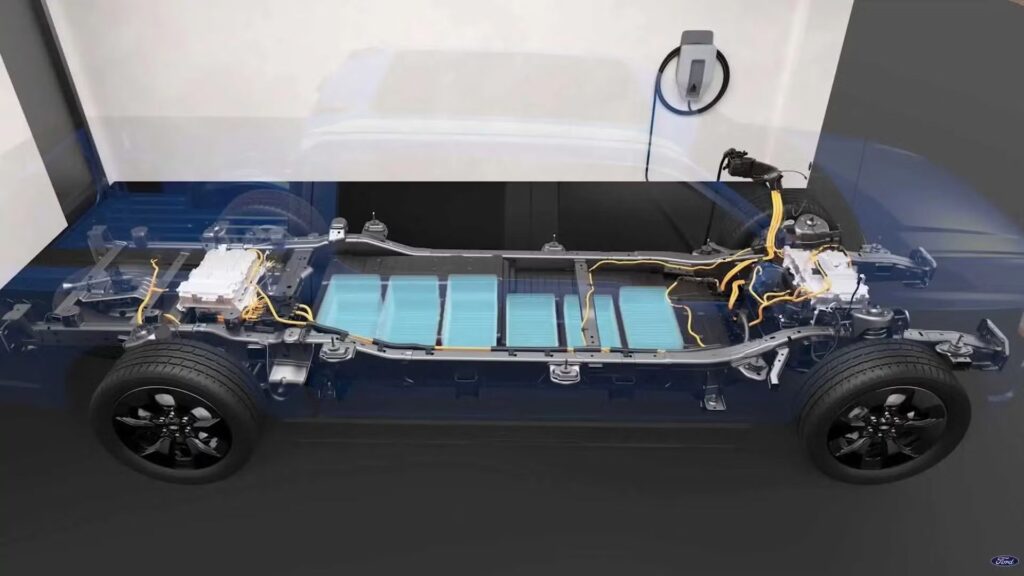
7. **Payload Capacity and Intelligent Cargo Management**Payload capacity, alongside towing, defines a pickup truck’s utility, and both electric contenders bring innovative solutions to the table. The Tesla Cybertruck offers a maximum payload capacity of 2,500 pounds across its models, providing a robust figure for hauling gear. The Ford F-150 Lightning, while highly capable, comes in slightly lower, with a payload capacity of 2,235 pounds with the standard-range battery pack and 1,952 pounds with the extended-range pack. Numerically, the Cybertruck has an edge, but the practical application of payload is where the distinctions truly shine.
Ford’s many decades of class dominance in truck building are evident in the F-150 Lightning’s cargo management. It features an “easy-access bed” complemented by a “power-opening and -closing tailgate with a pull-out step,” making loading and unloading significantly more convenient. The bed itself is “huge with power outlets in both,” emphasizing its utility. Perhaps its most game-changing feature is the “Mega Power Frunk” (front trunk), which measures a substantial 14.1 cubic feet—larger than the trunk in a Toyota Corolla sedan. This lockable, drainable, weather-resistant space comes equipped with multiple 120-volt outlets and USB-A and USB-C ports, transforming the truck into a mobile power station for tools or appliances.
The Cybertruck’s cargo bed is equally unique. Every Cybertruck is fitted with a “roller-shutter tonneau cover” over the cargo bed, which provides “extra security and keeps valuables from prying eyes.” This cover is also claimed to be “strong enough for a full-grown adult to step on without damaging the truck.” The truck’s “L-track bed rail system offers all manner of tie-down accessories,” providing versatile securing options. However, there are some practical trade-offs; for instance, “you can’t easily shovel mulch out over the side rails as you might in other trucks,” and “you can’t easily shovel mulch out over the side rails as you might in other trucks.” Similarly, positioning front-of-bed ratchet straps must be done *before* loading, as access becomes limited afterward. These design choices reflect Tesla’s unconventional approach, which prioritizes a sleek, secure aesthetic, sometimes at the expense of traditional truck bed functionality.
Living with an electric pickup truck, particularly one as unconventional as the Tesla Cybertruck or as familiar yet advanced as the Ford F-150 Lightning, transcends mere specifications. It delves into how these vehicles integrate into daily life, perform beyond the pavement, and ultimately deliver value. This second section ventures into the practicalities, technological marvels, and overall ownership experience that define these groundbreaking electric workhorses, exploring everything from their off-road capabilities to their long-term market positioning.
Car Model Information: 2024 Tesla Cybertruck All-Wheel Drive
Name: Tesla Cybertruck
Caption: 2024 Tesla Cybertruck, Foundation Series
Manufacturer: Tesla, Inc.
Production: November 2023 – present
ModelYears: 2024–present
Assembly: Austin, Texas
Designer: unbulleted list
Class: Pickup truck
BodyStyle: crew cab
Layout: unbulleted list
Transmission: Single-speed fixed (15:1 ratio)
ElectricRange: cvt
Wheelbase: cvt
Length: cvt
Width: cvt
Height: cvt
Weight: Unbulleted indent list
Sp: us
Charging: unbulleted list
Battery: val
Motor: unbulleted indent list
Categories: 2020s cars, All-wheel-drive vehicles, All Wikipedia articles written in American English, All articles containing potentially dated statements, All articles with unsourced statements
Summary: The Tesla Cybertruck is a battery-electric full-size pickup truck manufactured by Tesla, Inc. since 2023. It was first unveiled as a prototype in November 2019, featuring a distinctive angular design composed of flat, unpainted stainless steel body panels, drawing comparisons to low-polygon computer models.
Originally scheduled for production in late 2021, the vehicle faced multiple delays before entering limited production at Gigafactory Texas in November 2023, with initial customer deliveries occurring later that month. As of 2025, three variants are available: a tri-motor all-wheel drive (AWD) model marketed as the “Cyberbeast”, a dual-motor AWD model, and a single-motor rear-wheel drive (RWD) “Long Range” model. EPA range estimates vary by configuration, from 320 to 350 miles (515 to 565 km).
As of 2025, the Cybertruck is sold in the United States, Mexico, Canada and South Korea. The Cybertruck has been criticized for its production quality and safety concerns while its sales have been described as disappointing.
Get more information about: Tesla Cybertruck
Buying a high-performing used car >>>
Brand: Tesla Model: Cybertruck
Price: $75,395 Mileage: 2,133 mi.
Read more about: The Unyielding Workhorses: 13 Legendary Pickup Trucks and Engines Engineered to Conquer Half a Million Miles (and Beyond) with Proper Care

8. **Off-Roading Prowess and Limitations**For trucks designed to tackle diverse terrains, their off-roading capabilities are a crucial differentiator. The Tesla Cybertruck, with its aggressive styling and “gnarly look” Goodyear Wrangler Territory RT tires, has been heralded as an apocalypse-proof, go-anywhere rover. This aesthetic certainly sells a narrative of rugged individualism, suggesting an unparalleled ability to venture off the beaten path. However, real-world testing painted a more nuanced picture of its performance on challenging trails.
During assessments, the Cybertruck’s tires “quickly caked with dirt, sliding across muddy slopes and spinning where the others’ on-road tires found grip,” indicating a potential limitation in traction despite their appearance. It was also noted that these specific tires featured a dramatically shallower tread depth compared to a dedicated off-road tire like those on a Chevy Silverado 1500 ZR2. This suggests that serious off-road enthusiasts might need to budget for a tire upgrade, which could, in turn, impact on-road grip and energy efficiency.
Further hampering the Cybertruck’s off-road aspirations were functional limitations, such as a forward camera with a fish-eye view that focused too far ahead to be useful for precise tire placement on obstacles, and B-pillar cameras that offered little assistance. Critically, it struggled on challenging obstacles like a V-notch trail with a large boulder, partially due to its lack of activated locking differentials—a feature supposedly installed but not yet operational. The inability to gently release the brake while simultaneously squeezing the accelerator, a technique often employed in technical off-roading, also proved to be a drawback, as power is cut if both pedals are pressed. Moreover, the Cybertruck lacks a spare tire and assist handles, which are often essential for off-road excursions and accessibility when the suspension is jacked up. While its adaptive suspension does enhance off-road capability, the inability to fully disable its stability control system can restrict driver control in extreme scenarios.
In contrast, the Ford F-150 Lightning, despite its more conventional appearance, demonstrated “strong off-roading capabilities, performing well on challenging terrain.” While its forward camera was better aimed than the Cybertruck’s, it sometimes failed to activate during back-and-forth maneuvers and shut off above 5 mph. On the same challenging V-notch obstacle where the Cybertruck faltered, the Lightning’s tires also came off the ground significantly, but its rear locker system kept the truck moving steadily, showcasing a more practical approach to off-road traction management. The Rivian R1T, for context, excelled by maintaining superior suspension articulation, which kept its rubber firmly on the ground, with its brakes effectively managing traction, ultimately making it “imperturbable” in comparison and noted for its “deft off-road chops.”
Car Model Information: 2024 Tesla Cybertruck All-Wheel Drive
Name: Tesla Cybertruck
Caption: 2024 Tesla Cybertruck, Foundation Series
Manufacturer: Tesla, Inc.
Production: November 2023 – present
ModelYears: 2024–present
Assembly: Austin, Texas
Designer: unbulleted list
Class: Pickup truck
BodyStyle: crew cab
Layout: unbulleted list
Transmission: Single-speed fixed (15:1 ratio)
ElectricRange: cvt
Wheelbase: cvt
Length: cvt
Width: cvt
Height: cvt
Weight: Unbulleted indent list
Sp: us
Charging: unbulleted list
Battery: val
Motor: unbulleted indent list
Categories: 2020s cars, All-wheel-drive vehicles, All Wikipedia articles written in American English, All articles containing potentially dated statements, All articles with unsourced statements
Summary: The Tesla Cybertruck is a battery-electric full-size pickup truck manufactured by Tesla, Inc. since 2023. It was first unveiled as a prototype in November 2019, featuring a distinctive angular design composed of flat, unpainted stainless steel body panels, drawing comparisons to low-polygon computer models.
Originally scheduled for production in late 2021, the vehicle faced multiple delays before entering limited production at Gigafactory Texas in November 2023, with initial customer deliveries occurring later that month. As of 2025, three variants are available: a tri-motor all-wheel drive (AWD) model marketed as the “Cyberbeast”, a dual-motor AWD model, and a single-motor rear-wheel drive (RWD) “Long Range” model. EPA range estimates vary by configuration, from 320 to 350 miles (515 to 565 km).
As of 2025, the Cybertruck is sold in the United States, Mexico, Canada and South Korea. The Cybertruck has been criticized for its production quality and safety concerns while its sales have been described as disappointing.
Get more information about: Tesla Cybertruck
Buying a high-performing used car >>>
Brand: Tesla Model: Cybertruck
Price: $75,395 Mileage: 2,133 mi.
Read more about: For Snow Belt Residents: A Deep Dive into the 10 Worst Winter-Ready Vehicles on the Market Today
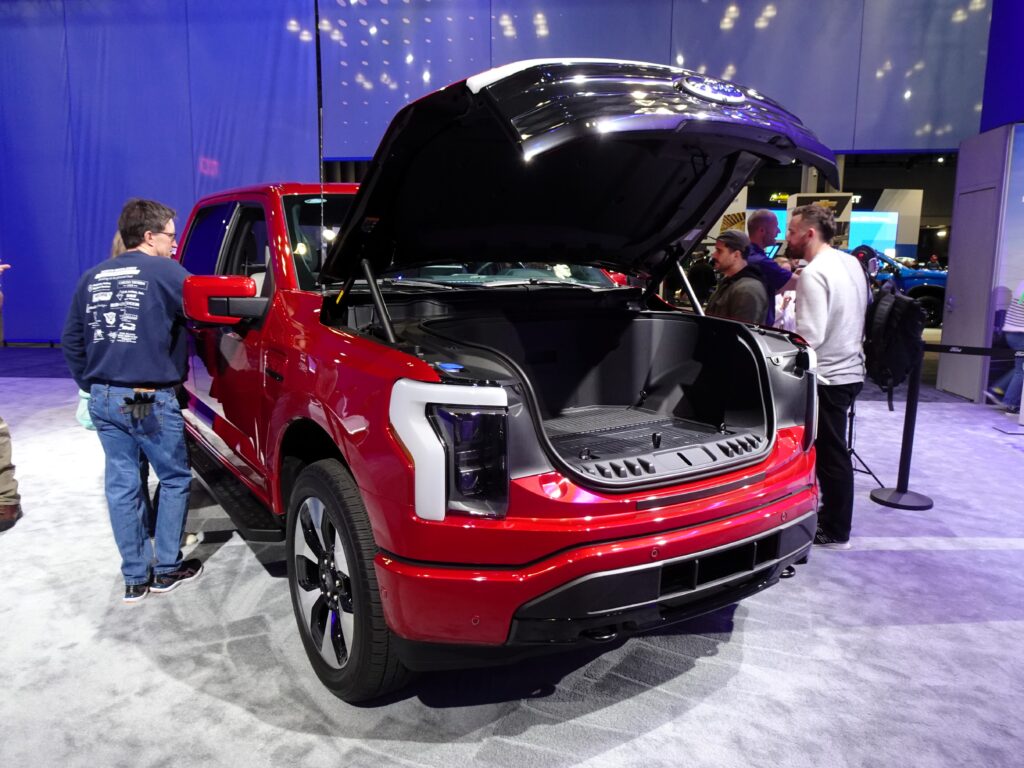
9. **Interior Design, Comfort, and Passenger Space**Stepping inside these electric behemoths reveals two vastly different approaches to interior design, comfort, and the overall passenger experience. The Ford F-150 Lightning embraces a philosophy of “comfortable familiarity and luxury,” providing a “refined, truck-appropriate interior” that aligns with Ford’s legacy. It boasts “available leather-trimmed seating, a massive 15.5-inch touchscreen,” and offers a user-friendly environment. Ford’s Platinum trim, in particular, comes equipped with “all the traditional luxury trappings,” including “rich leather with contrast stitching, wood, BlueCruise hands-free highway driving, heated and cooled everything, and cushy multiadjustable seats.”
The Lightning’s seats are lauded for offering “excellent comfort and support, making long drives more enjoyable,” while providing “ample headroom for most passengers,” contributing to a sense of spaciousness and accessibility. Its overall ride quality is described as “smooth and composed,” with the suspension “tuned for comfort in a variety of driving conditions.” Edmunds’ experts, while noting the Cybertruck’s ride quality as one notch above, still highlight the Lightning’s interior as “larger and more practical” and its controls as “easy-to-use,” reinforcing its appeal as a well-appointed and practical choice for daily driving.
In stark opposition, the Tesla Cybertruck delivers an “abject minimalism” in its cabin, characterized by “ultra-bright white contrast upholstery accented with LED lighting.” While its front seats are deemed comfortable, the “three-place rear bench includes lateral support for the center rider, but the seats are markedly firmer than the Ford’s.” This minimalist layout, while visually striking with a “similarly large screen,” is often criticized for sacrificing comfort and functionality in favor of style, leading to a less practical passenger experience compared to the Lightning. Edmunds specifically states that it “doesn’t offer as much passenger space as the Lightning.”
Despite its starkness, the Cybertruck does offer some unique amenities, such as a dedicated screen for rear-seat riders, enabling “video or music streaming, Caraoke, and internet browsing,” assuming a cellular LTE signal is available via Tesla’s Premium Connectivity package. This caters to a more digitally-centric user, providing entertainment options that align with the brand’s tech-forward image. For reference, the Rivian R1T attempts to bridge the gap between Ford’s opulence and Tesla’s starkness with an interior featuring “plenty of open-pore wood, leather, metal, and sisal-look floormats,” offering a blend of ruggedness and modern design.
Car Model Information: 2024 RAM 2500 Big Horn Crew Cab 4×4 6’4′ Box
Name: Ford F-150 Lightning
Manufacturer: Ford Motor Company
Related: Ford F-Series (fourteenth generation)
Assembly: Dearborn, Michigan
ModelYears: 2022–present
Production: April 2022 – present
Layout: Dual-motor, four-wheel-drive
Platform: Ford T platform#T3
Class: Pickup truck
Sp: us
Battery: lithium-ion
Motor: permanent magnet motor
ElectricRange: Unbulleted list
Abbr: on (extended battery)
Powerout: Unbulleted list
Charging: Unbulleted list
Designer: Unbulleted list
Wheelbase: cvt
Length: cvt
Width: cvt
Height: cvt
Weight: cvt
Categories: All Wikipedia articles in need of updating, All Wikipedia articles written in American English, All articles containing potentially dated statements, All articles with unsourced statements, Articles containing potentially dated statements from June 2022
Summary: The Ford F-150 Lightning is a battery electric full-size light duty truck unveiled by the Ford Motor Company in May 2021 as part of the fourteenth generation Ford F-Series. Four models have been announced, and all models initially will be dual-motor, four-wheel-drive, with EPA range estimates of 240–320 mi (390–510 km). A commercial-grade version of the all-wheel drive (AWD) truck is sold in the United States, with higher-power/trim/range models also sold. The F-150 Lightning began production on April 26, 2022.
Get more information about: Ford F-150 Lightning
Buying a high-performing used car >>>
Brand: Ford Model: F-150 Lightning
Price: $42,587 Mileage: 41,085 mi.
Read more about: From Promising Prospects to Puzzling Flops: The Pickup Trucks That Just Can’t Seem to Find a Home

10. **Advanced Technology and Driver-Assist Systems (BlueCruise vs. Autopilot)**The integration of advanced technology and driver-assist systems is a battleground where both the Ford F-150 Lightning and the Tesla Cybertruck showcase their respective philosophies, often differing in their maturity and implementation. Ford’s approach with the F-150 Lightning centers on “intuitive, work-ready innovation.” A prime example is its “BlueCruise” system, a hands-free highway driving aid that has “mightily impressed” testers. This system covers “more than 130,000 miles of roads throughout North America,” offering a “refined and a great way to reduce fatigue during long drives.”
The Lightning also features a substantial “sizable 15.5-inch center touchscreen” and offers “more smartphone connectivity options” like Apple CarPlay and Android Auto, which the Cybertruck notably lacks. Beyond BlueCruise, Ford includes “many advanced driver aids” and provides “self-driving features that are ready for daily use.” Additionally, Ford’s screen includes various games to entertain front occupants during charging sessions, adding a touch of convenience and amusement to the ownership experience.
Tesla, on the other hand, distinguishes itself with “unique software and connectivity solutions,” offering “over-the-air updates and advanced in-cabin features.” Its “Full Self-Driving package,” a long list of advanced driver aids, promises to “automatically accelerate, brake and steer the truck,” and is standard on the Cybertruck. However, as Edmunds experts caution, it “is not actually a self-driving system,” and “the driver must pay attention and intervene when needed.” Furthermore, this package is “currently only available to a select number of owners,” and its reliability has “drawn scrutiny.” Tesla’s ambitious Autopilot and Full Self-Driving capabilities are described as “very new” and representing a “more experimental approach” compared to Ford’s more established systems.
The Cybertruck’s technology largely revolves around its “massive 18.5-inch center touchscreen,” which controls almost everything in the vehicle. While visually impressive and responsive, “using certain controls while driving can be distracting.” The absence of full smartphone connectivity like Apple CarPlay and Android Auto is a significant trade-off for many modern users. Despite these interface challenges, the Cybertruck does offer perks like rear-seat screens with streaming capabilities and “effortless connectivity and charging” via its integrated Supercharger network access, reflecting Tesla’s digital-native ecosystem. The Rivian R1T, for comparison, while moving towards a more screen-centric interface, still grapples with issues like the “lack of a resume function for the cruise control and the lack of lane centering on unmapped highways,” indicating that even in the premium EV truck segment, technological refinement is an ongoing process.

11. **User Experience and Interface Challenges**The user experience in these electric pickups varies dramatically, particularly when it comes to the interface and daily interaction. The Ford F-150 Lightning prioritizes familiarity and ease of use. Having spent significant time in two Lightnings, testers note “how easy they are to acclimate to.” It “looks and feels ‘normal’,” making it a “user-friendly interior” with “easy-to-use interior controls.” This approach respects the expectations of traditional truck buyers, ensuring a “luxuriously familiar” transition into the electric era.
The Tesla Cybertruck, by contrast, represents a “parkour leap up and out of a traditional trucker’s comfort zone.” Its interface is so profoundly different that “nearly everything about this truck and how one interfaces with it is different—sometimes wildly or dangerously so.” This steep learning curve raises concerns, even for “Turo renters who may not get much familiarization,” and could pose challenges for casual users or cohabitants.
Visibility, a critical aspect of user experience, is particularly problematic in the Cybertruck. The truck is “remarkably hard to see out of,” given the “sheer size and surface area of the Tesla’s glazing.” The A- and A-plus pillars “obscure a lot of what you want to see when turning,” while the B-pillars are “very thick.” Even with the tonneau cover open, providing a 10 percent aero penalty, visibility to the rear is a “gun-slit view.” The interior rearview mirror is “laughably small,” only showing the tires and bumper of a following vehicle for anyone over 5 feet tall, with Tesla’s “fix” being a small rearview camera image on the center screen—a solution that analysts suggest needs to be replaced with a proper digital rearview mirror. Moreover, a simple task like activating the giga-wiper becomes a “two-step process” involving a tiny steering wheel button and a pop-up menu on the screen, a task potentially problematic in an emergency. MotorTrend critiques its “Borderline dangerous secondary controls” and “Bunker visibility,” underscoring the significant learning curve and practical impediments to daily operation. Even a Tesla Model Y chaperone, fluent in Tesla’s control strategy, found “various functions tricky to discover and remember,” highlighting the inherent challenges in the Cybertruck’s minimalist and highly unconventional control layout.
Car Model Information: 2024 RAM 2500 Big Horn Crew Cab 4×4 6’4′ Box
Name: Ford F-150 Lightning
Manufacturer: Ford Motor Company
Related: Ford F-Series (fourteenth generation)
Assembly: Dearborn, Michigan
ModelYears: 2022–present
Production: April 2022 – present
Layout: Dual-motor, four-wheel-drive
Platform: Ford T platform#T3
Class: Pickup truck
Sp: us
Battery: lithium-ion
Motor: permanent magnet motor
ElectricRange: Unbulleted list
Abbr: on (extended battery)
Powerout: Unbulleted list
Charging: Unbulleted list
Designer: Unbulleted list
Wheelbase: cvt
Length: cvt
Width: cvt
Height: cvt
Weight: cvt
Categories: All Wikipedia articles in need of updating, All Wikipedia articles written in American English, All articles containing potentially dated statements, All articles with unsourced statements, Articles containing potentially dated statements from June 2022
Summary: The Ford F-150 Lightning is a battery electric full-size light duty truck unveiled by the Ford Motor Company in May 2021 as part of the fourteenth generation Ford F-Series. Four models have been announced, and all models initially will be dual-motor, four-wheel-drive, with EPA range estimates of 240–320 mi (390–510 km). A commercial-grade version of the all-wheel drive (AWD) truck is sold in the United States, with higher-power/trim/range models also sold. The F-150 Lightning began production on April 26, 2022.
Get more information about: Ford F-150 Lightning
Buying a high-performing used car >>>
Brand: Ford Model: F-150 Lightning
Price: $42,587 Mileage: 41,085 mi.
Read more about: Beyond Limits: The Human Art of Drifting and the Autonomous Tech Redefining Sideways Driving
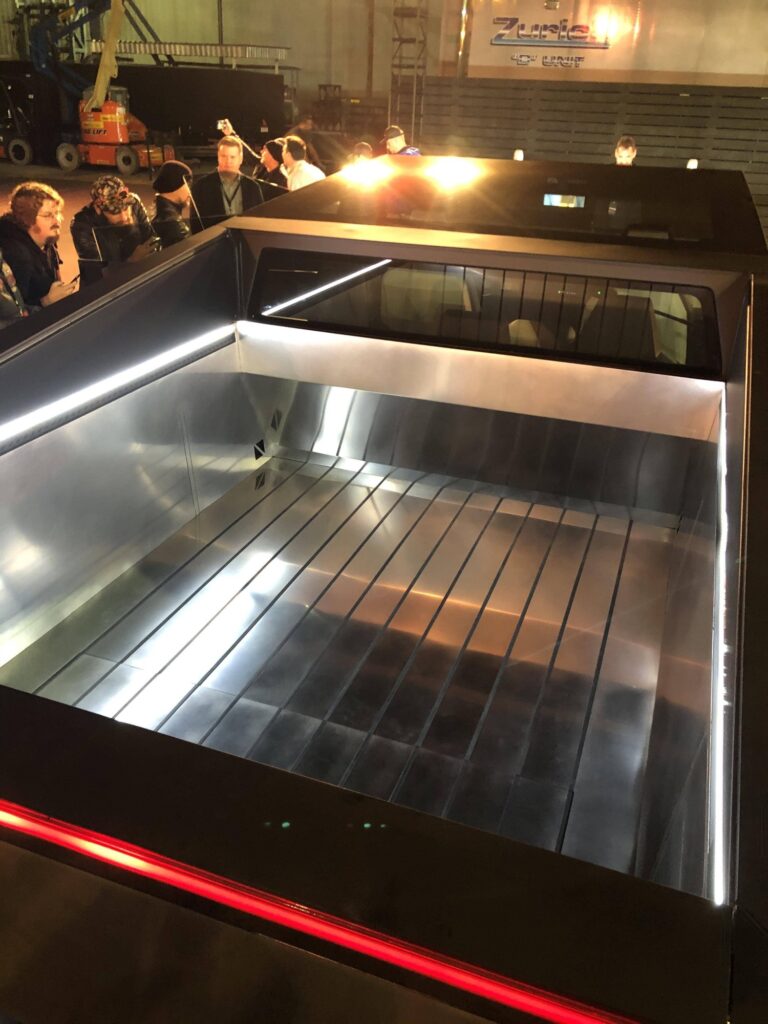
12. **Practicality for Daily Living and Cargo Access**Beyond the driving dynamics and interior aesthetics, the true test of a pickup truck lies in its practicality for daily living and its cargo management capabilities. The Ford F-150 Lightning excels in this domain, leveraging “many decades of class dominance in truck building.” It offers an “easy-access bed” complemented by a “power-opening and -closing tailgate with a pull-out step,” making the mundane tasks of loading and unloading significantly more convenient. The bed itself is described as “huge with power outlets in both,” emphasizing its utility and versatility for various tasks.
Perhaps the most game-changing feature for the Lightning is its “Mega Power Frunk” (front trunk). This substantial 14.1 cubic feet of storage, larger than the trunk in a Toyota Corolla sedan, is “lockable, drainable, weather-resistant,” and equipped with multiple 120-volt outlets and USB ports. This transforms the truck into a mobile power station, ideal for tools, appliances, or powering a campsite. Furthermore, the traditional bed design allows for “taller folks to reach over the rails and access stuff in the bed.” Edmunds also praises the Lightning for “significantly better outward visibility” and concludes it is the winner due to its “larger and more practical interior” and its “balance of comfort, storage, and functionality that matters” for everyday usability.
The Cybertruck’s cargo bed presents a unique, albeit sometimes less practical, set of features. It comes standard with a “roller-shutter tonneau cover” for “extra security and keeps valuables from prying eyes,” even claimed to be “strong enough for a full-grown adult to step on.” Its “L-track bed rail system offers all manner of tie-down accessories,” providing versatile securing options. However, these innovations come with practical trade-offs. Testers found “you can’t easily shovel mulch out over the side rails as you might in other trucks,” and that “positioning front-of-bed ratchet straps must be done *before* loading, as access becomes limited afterward.” Additionally, its “kooky triangle mirrors are antithetical to towing,” and the “hitch location was inset too deeply to accommodate our variable-height ball adapter,” creating practical impediments. The tonneau cover, while secure, “impacts both storage flexibility and rearview camera visibility,” further complicating daily usability. These design choices, while futuristic, sometimes sacrifice traditional truck bed functionality, prioritizing a sleek, secure aesthetic over conventional utility.
Read more about: From Promising Prospects to Puzzling Flops: The Pickup Trucks That Just Can’t Seem to Find a Home
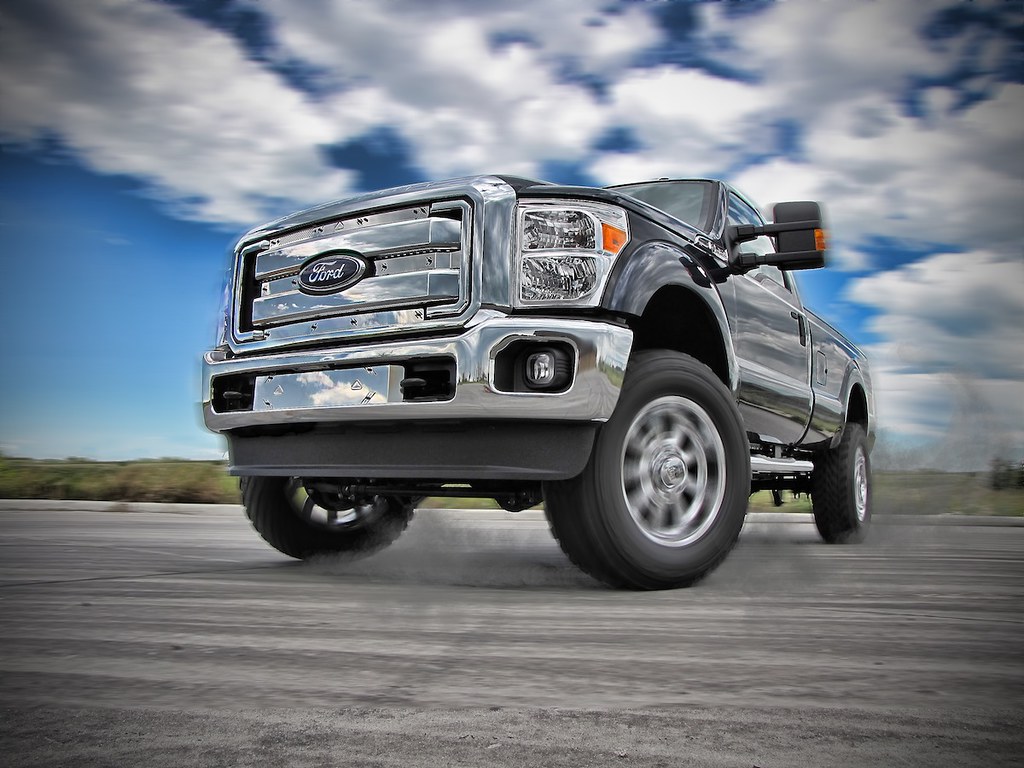
13. **Pricing, Value Proposition, and Market Positioning**When considering an electric pickup, the pricing and overall value proposition are often decisive factors, and here, the Ford F-150 Lightning and Tesla Cybertruck diverge significantly. The Ford F-150 Lightning, the “reigning Best Buy Award winner among electric trucks,” offers a more accessible entry point. Its pricing starts at $49,875 for the Pro trim, with the XLT trim at $65,540, and the top-tier Platinum trim at $87,190. Edmunds explicitly notes that “excluding the commercial-oriented Pro version, pricing for the Lightning starts at $65,090 for the XLT trim.” This aggressive pricing strategy positions the Lightning as a “far more practical — and less polarizing — choice for anyone considering an electrified truck.”
The Cybertruck, by contrast, commands a premium. Its All-Wheel Drive model starts at $82,235, but Edmunds also cites a starting price of $102,235 including destination for the All-Wheel Drive, and the Cyberbeast at $122,235. The disparity in pricing is stark, with Edmunds concluding, “It’s hard to justify the $40,000 price difference between the base models,” and that “the Cybertruck makes the Lightning look like a steal.” Tesla has promised a less expensive Rear-Wheel Drive model, but it is not expected until next year, leaving the higher-priced configurations as the immediate options.
Ford’s Platinum trim, while nearly matching the Cybertruck’s base price, “offers much more value thanks to its long list of luxury, tech and towing features,” as determined by Edmunds. This positions the Lightning as a “better long-term investment” due to its established practicality and comprehensive feature set at a competitive price. The Cybertruck, while a “technological tour de force,” often appeals to a different buyer—one described by MotorTrend as a “digital native who crave[s] attention more than they do adventure.” The Rivian R1T, for comparative context, also falls into the higher-priced luxury lifestyle segment, with test vehicles easily reaching over $100,000, and MotorTrend noting its “pricey options.” Ultimately, the Lightning’s value proposition is strong for those seeking traditional truck utility with electric power at a more attainable price point, while the Cybertruck caters to those prioritizing radical design and cutting-edge, albeit sometimes experimental, technology regardless of cost.
Car Model Information: 2021 Hyundai PALISADE Calligraphy
Name: Ford F-150 Lightning
Manufacturer: Ford Motor Company
Related: Ford F-Series (fourteenth generation)
Assembly: Dearborn, Michigan
ModelYears: 2022–present
Production: April 2022 – present
Layout: Dual-motor, four-wheel-drive
Platform: Ford T platform#T3
Class: Pickup truck
Sp: us
Battery: lithium-ion
Motor: permanent magnet motor
ElectricRange: Unbulleted list
Abbr: on (extended battery)
Powerout: Unbulleted list
Charging: Unbulleted list
Designer: Unbulleted list
Wheelbase: cvt
Length: cvt
Width: cvt
Height: cvt
Weight: cvt
Categories: All Wikipedia articles in need of updating, All Wikipedia articles written in American English, All articles containing potentially dated statements, All articles with unsourced statements, Articles containing potentially dated statements from June 2022
Summary: The Ford F-150 Lightning is a battery electric full-size light duty truck unveiled by the Ford Motor Company in May 2021 as part of the fourteenth generation Ford F-Series. Four models have been announced, and all models initially will be dual-motor, four-wheel-drive, with EPA range estimates of 240–320 mi (390–510 km). A commercial-grade version of the all-wheel drive (AWD) truck is sold in the United States, with higher-power/trim/range models also sold. The F-150 Lightning began production on April 26, 2022.
Get more information about: Ford F-150 Lightning
Buying a high-performing used car >>>
Brand: Ford Model: F-150 Lightning
Price: $26,415 Mileage: 86,026 mi.
Read more about: A Financial Advisor’s Blueprint: 15 Essential Investment Strategies for a Secure Retirement in 2025

14. **Overall Verdict and Who Should Choose Which Truck**The journey through the capabilities and living experiences of the Ford F-150 Lightning and the Tesla Cybertruck reveals two distinct visions for the electric pickup truck. Both represent formidable machines pushing the boundaries of what a truck can be, yet they cater to fundamentally different buyer profiles. The Ford F-150 Lightning emerges as the more pragmatic and broadly appealing choice for the majority of truck buyers making the leap to electric.
Edmunds unequivocally declares, “The Lightning is the winner because it offers more value, more towing tech, and a larger and more practical interior.” It is celebrated for its “comfortable familiarity and luxury,” its “user-friendly interior,” “many standard safety features,” and for delivering “brisk performance and a solid degree of driving range.” MotorTrend places the Lightning in third, calling it “the safest choice for folks who frequently curse at their phones, computers, ATMs, or smart TVs,” underscoring its accessible and conventional approach. It’s a truck that embodies Ford’s “legendary truck DNA into the electric era,” providing a “practical, reliable experience that matches Ford’s reputation,” without compromising on essential features or performance.
The Tesla Cybertruck, while undeniably a “technological tour de force,” is a truck for a niche audience. We applaud Tesla for “thinking outside the box when designing and engineering its first pickup truck,” acknowledging that “it’s certainly like no other vehicle sold today, and that alone has generated a lot of interest.” Its “outstanding performance,” particularly in acceleration, is impressive, and “the Cybertruck will turn more heads than a Ferrari.” MotorTrend positions it in second place, calling it “the electric truck for digital natives who crave attention more than they do adventure,” while citing its “Borderline dangerous secondary controls” and “Bunker visibility” as significant drawbacks. Ultimately, if a “bold, unconventional design with promises of high performance” and “futuristic styling and innovative features” are your primary drivers, and practicality takes a back seat to making a statement, then the Cybertruck is the clear, albeit polarizing, choice.
Car Model Information: 2021 Hyundai PALISADE Calligraphy
Name: Ford F-150 Lightning
Manufacturer: Ford Motor Company
Related: Ford F-Series (fourteenth generation)
Assembly: Dearborn, Michigan
ModelYears: 2022–present
Production: April 2022 – present
Layout: Dual-motor, four-wheel-drive
Platform: Ford T platform#T3
Class: Pickup truck
Sp: us
Battery: lithium-ion
Motor: permanent magnet motor
ElectricRange: Unbulleted list
Abbr: on (extended battery)
Powerout: Unbulleted list
Charging: Unbulleted list
Designer: Unbulleted list
Wheelbase: cvt
Length: cvt
Width: cvt
Height: cvt
Weight: cvt
Categories: All Wikipedia articles in need of updating, All Wikipedia articles written in American English, All articles containing potentially dated statements, All articles with unsourced statements, Articles containing potentially dated statements from June 2022
Summary: The Ford F-150 Lightning is a battery electric full-size light duty truck unveiled by the Ford Motor Company in May 2021 as part of the fourteenth generation Ford F-Series. Four models have been announced, and all models initially will be dual-motor, four-wheel-drive, with EPA range estimates of 240–320 mi (390–510 km). A commercial-grade version of the all-wheel drive (AWD) truck is sold in the United States, with higher-power/trim/range models also sold. The F-150 Lightning began production on April 26, 2022.
Get more information about: Ford F-150 Lightning
Buying a high-performing used car >>>
Brand: Ford Model: F-150 Lightning
Price: $26,415 Mileage: 86,026 mi.
In the grand scheme of the evolving electric truck market, the Rivian R1T, which consistently impressed throughout comparisons, secured MotorTrend’s top spot. It was lauded as “a just-right blend of distinctive design and accessible innovation that encourages outdoor exploration,” celebrated for its “impressive performance and range,” “deft off-road chops,” and its ability to be a “rock-steady tow rig.” For those seeking a harmonious blend of luxury, adventure, and refined electric performance, the Rivian stands out. However, for a direct comparison of mass-market utility and accessibility, the Ford F-150 Lightning presents itself as the superior long-term investment and the more practical, well-rounded electric truck, while the Cybertruck continues to captivate as a radical, attention-grabbing experiment in automotive design. The choice between these electric titans ultimately hinges on whether one values evolutionary refinement and proven utility or revolutionary design and experimental technology. For many, the future of work and play will likely continue to converge towards the pragmatic dependability offered by Ford.


